The CLD210M Differential Cylinder Pressure Tester is an essential tool for engine diagnostics, helping identify issues like worn rings and defective valves. Its manual provides detailed guidance on operation and troubleshooting, ensuring accurate diagnoses and efficient repairs.
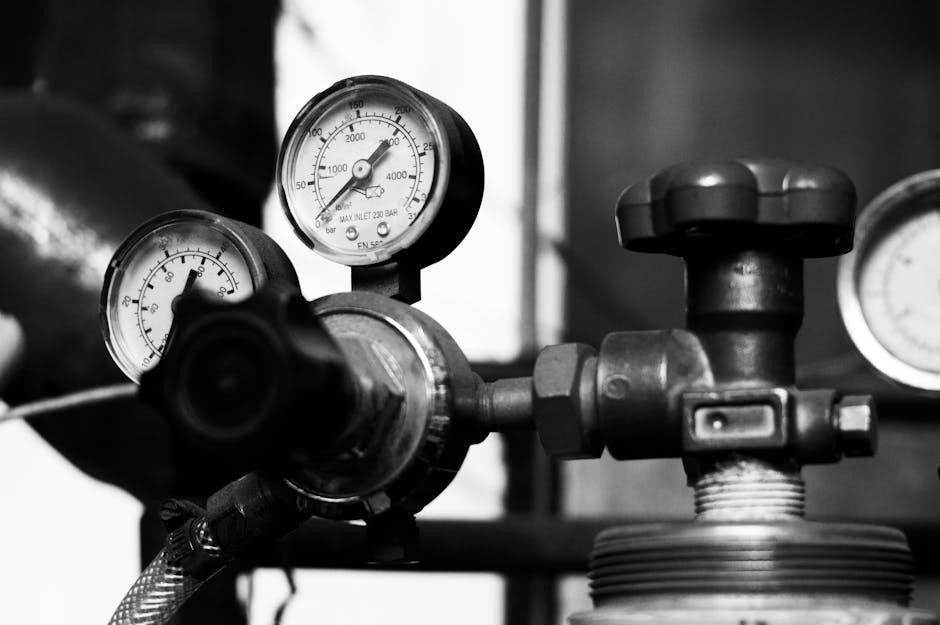
1.1 Overview of the Tool
The CLD210M Differential Cylinder Pressure Tester is a sophisticated diagnostic tool designed to measure pressure differences in engine cylinders. It is widely used in automotive, aviation, and industrial settings to identify issues such as worn piston rings, cracked cylinders, or defective valves. The tool features a durable design, a pressure regulator, and dual gauges for precise readings. With a pressure range of 0-100 PSI, it provides accurate data to help technicians assess engine performance efficiently. Its portability and ease of use make it a valuable asset for professionals in various industries. The CLD210M is known for its reliability and is often included in comprehensive kits that include adapters and carrying cases for convenience. This tool is essential for diagnosing engine problems quickly and effectively, ensuring optimal performance and longevity of engines.
1.2 Importance in Engine Diagnostics
The CLD210M Differential Cylinder Pressure Tester plays a pivotal role in engine diagnostics by providing precise insights into cylinder health. It helps identify issues such as worn piston rings, cracked cylinders, and defective valves, enabling technicians to pinpoint problems quickly. By measuring pressure differences, the tool offers a clear understanding of engine performance, ensuring accurate diagnoses. Its ability to detect even minor leaks or irregularities makes it invaluable for maintaining engine efficiency and preventing costly repairs. Regular use of the CLD210M can extend engine lifespan by addressing issues early, reducing downtime, and optimizing overall performance. This tool is indispensable for professionals in automotive, aviation, and industrial sectors, where engine reliability is critical. Its accuracy and reliability make it a cornerstone in modern diagnostic practices, ensuring engines operate at their best.
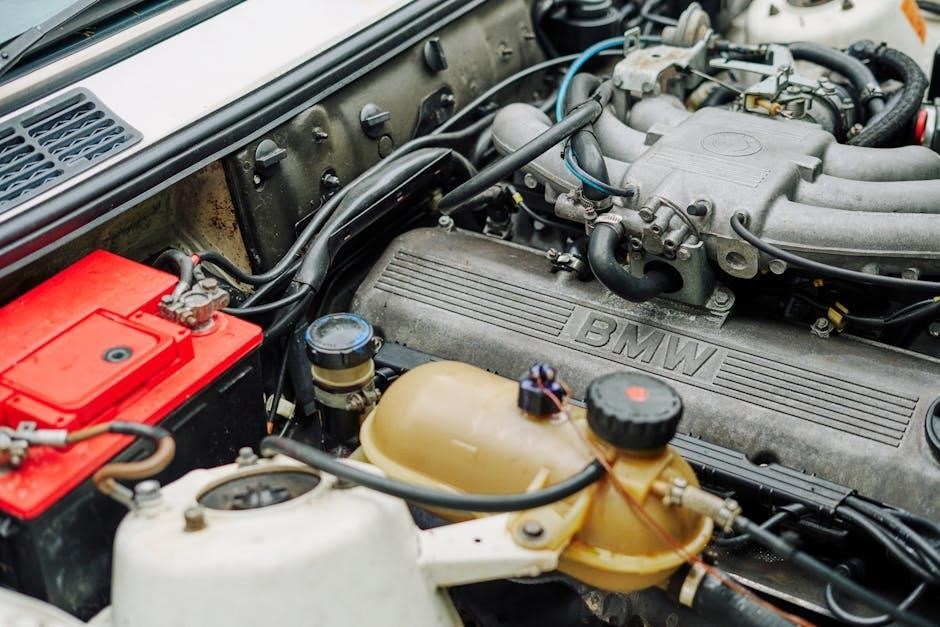
Features and Specifications of the CLD210M
The CLD210M features a robust design, precise pressure measurement, and a wide range of components for accurate engine diagnostics. Its specifications ensure reliability and durability, making it a preferred choice for professionals.
2.1 Technical Details and Pressure Range
The CLD210M Differential Cylinder Pressure Tester is designed with precision engineering, offering a pressure range of 0-100 PSI. Equipped with a built-in regulator, it ensures accurate pressure control during diagnostics. The tester features a 2.5″ gauge for clear readings and a durable aluminum square manifold for reliable performance. Its lightweight design, weighing approximately 10 lbs, enhances portability for technicians. The pressure range allows for testing various engine sizes, from small automotive engines to larger industrial applications. The tool’s technical specifications ensure consistency and accuracy, making it an indispensable asset for diagnosing engine issues such as worn rings, faulty valves, and leaky head gaskets. By maintaining precise pressure control, the CLD210M delivers reliable results, aiding in efficient troubleshooting and repair processes.
2.2 Components and Design Overview
The CLD210M Differential Cylinder Pressure Tester is a comprehensive kit designed for precise engine diagnostics. It includes a main unit with a built-in pressure regulator, a 2.5″ gauge for accurate pressure readings, and an aluminum square manifold for durability. The kit also features a female quick-connect (Q.C.) connector, a 24″ hose assembly, and a male Q.C. plug for secure connections. Additionally, it comes with a red carry case for convenient storage and transport. The tester’s design emphasizes portability and ease of use, with a lightweight construction weighing approximately 10 lbs. The inclusion of a 10MM adapter ensures compatibility with various engine types, while the regulator allows for precise pressure control during testing. This well-organized design ensures that all components are easily accessible, making the CLD210M a practical and efficient tool for engine diagnostics.
2.3 Unique Features Compared to Other Testers
The CLD210M stands out for its advanced features, including a dual-gauge system that measures both inlet and cylinder pressure simultaneously, providing a clear differential reading. Unlike competitors, it offers a built-in pressure regulator for precise control, eliminating the need for external devices. The tester’s compact, lightweight design and durable aluminum manifold ensure portability and longevity. A unique feature is its quick-connect fittings, which simplify setup and reduce testing time. Additionally, the CLD210M comes with a comprehensive manual and a protective carry case, enhancing convenience. Its ability to detect subtle pressure differences makes it more accurate than many alternatives, making it a preferred choice for professionals. These features combine to offer a user-friendly, efficient, and reliable solution for engine diagnostics, surpassing other testers in both functionality and ease of use.
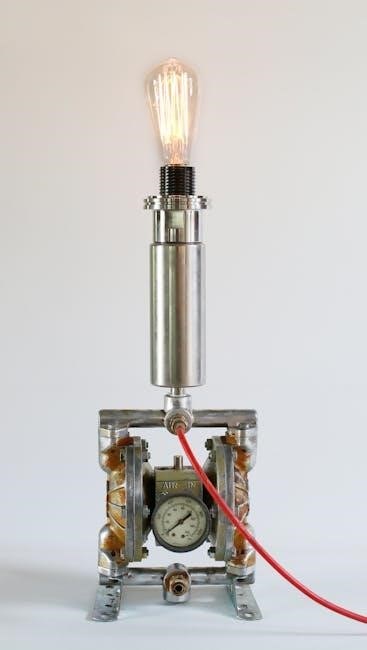
Components and Accessories Included
The CLD210M kit includes a dual-gauge system, pressure regulator, aluminum manifold, hoses, adapters, and a carry case for organized storage and transport.
3.1 List of Components in the Kit
The CLD210M Differential Cylinder Pressure Tester kit includes a 2.5″ dual-gauge system, a pressure regulator, an aluminum square manifold, 24″ hose assembly, and various adapters. It also features a female quick-connect (Q.C.) connector, a male Q.C. plug, and a durable red carry case for storage. Additional components such as a 10MM adapter ensure compatibility with different engine types. The kit is designed to provide everything needed for accurate pressure testing, making it a comprehensive solution for engine diagnostics. Each component is carefully crafted to ensure durability and precision, allowing technicians to identify issues like worn rings or defective valves efficiently. The inclusion of a carry case enhances portability, keeping all parts organized and within reach during testing sessions.
3.2 Purpose of Each Accessory
The dual-gauge system in the CLD210M kit measures both inlet and cylinder pressure, enabling precise diagnosis of engine issues. The pressure regulator controls test pressure, ensuring consistency across measurements. The aluminum manifold distributes air evenly, while the 24″ hose provides flexibility during testing. The female and male Q.C; connectors allow quick and secure connections to engine ports. Adapters like the 10MM version ensure compatibility with various engine types. The red carry case protects and organizes all components, enhancing portability. Each accessory is designed to streamline the testing process, ensuring accurate results. Together, they help technicians identify problems such as worn rings or defective valves efficiently. These tools work in harmony to provide a comprehensive diagnostic solution, making the CLD210M an indispensable asset for engine maintenance and repair.
Operating Instructions for the CLD210M
Set the engine to TDC, connect the tester, and regulate pressure to 80 psi. Monitor gauges for pressure differences, ensuring readings stay within acceptable limits for accurate diagnostics.
4.1 Setting Up the Tester
Setting up the CLD210M Differential Cylinder Pressure Tester involves several key steps to ensure accurate and reliable results. First, ensure the engine is turned off and cool to avoid any potential hazards. Locate the spark plug of the cylinder you wish to test and remove it to access the cylinder. Next, attach the appropriate adapter from the kit to the spark plug port, ensuring a secure and leak-free connection. Connect the tester’s hose to the adapter, making sure all fittings are tight. Turn on the regulator and set the inlet pressure to the recommended 80 psi using the built-in regulator. Check the gauges for any leaks by observing the pressure readings. If the pressure drops rapidly, inspect connections for leaks and tighten as needed. Finally, refer to the manual for specific calibration procedures to ensure the tester is ready for use. Proper setup is crucial for obtaining accurate test results.
4.2 Connecting the Tester to the Engine
Connecting the CLD210M Differential Cylinder Pressure Tester to the engine requires careful preparation and adherence to proper procedures. Begin by locating the cylinder you wish to test and ensuring the piston is set as close as possible to Top Dead Center (TDC). Remove the spark plug or fuel injector to access the cylinder. Attach the appropriate adapter from the kit to the spark plug port, ensuring a tight seal to prevent air leaks. Next, connect the tester’s hose to the adapter, making sure the connection is secure. Turn on the regulator and set the inlet pressure to the recommended 80 psi. Monitor the gauges to ensure the pressure remains stable. If the lower gauge reading falls below 60 psi, it may indicate a potential issue. Always refer to the manual for specific instructions tailored to your engine type. Proper connection is vital for accurate test results and safe operation.
4.3 Calibrating the Tool for Accuracy
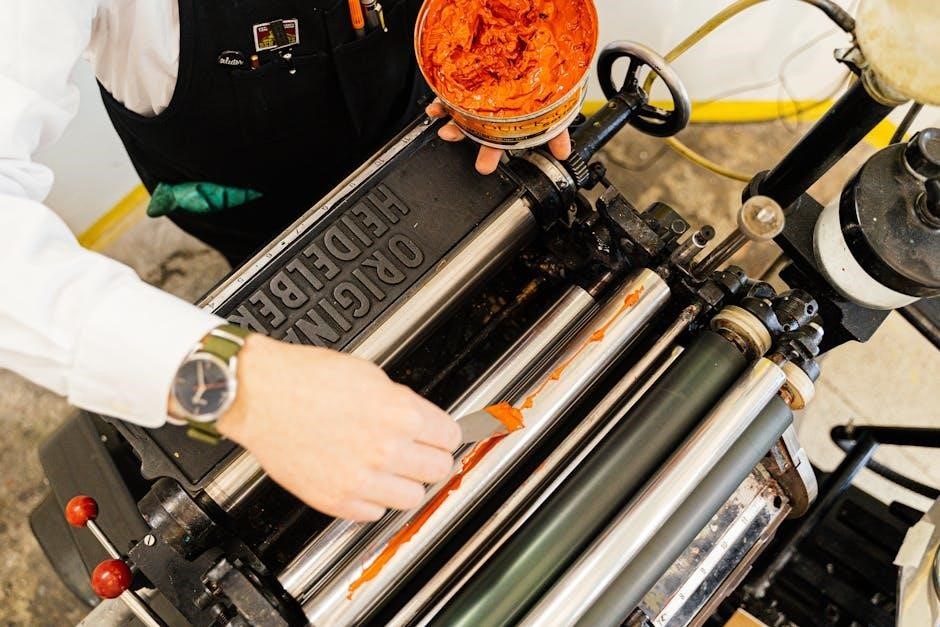
Calibrating the CLD210M Differential Cylinder Pressure Tester ensures precise readings and reliable diagnostics. Begin by pressurizing the system without connecting it to the engine. Set the inlet pressure to 80 psi using the built-in regulator. Adjust the gauges so both display the same pressure reading, ensuring accuracy. If the gauges do not align, refer to the manual for adjustment instructions. For flow calibration, use a known orifice, such as a 0.080-inch nozzle, to simulate leakage. This setup should show approximately 80% leakage on the gauge. Compare the readings to the chart provided in the manual to verify accuracy. Regular calibration is essential to maintain the tool’s performance and ensure consistent results. Always follow the manufacturer’s guidelines for calibration to uphold the integrity of your engine diagnostics. Proper calibration is critical for identifying issues like worn rings or defective valves accurately.
4.4 Step-by-Step Guide to Performing a Test
Ensure the engine is at operating temperature and set the piston of the cylinder being tested to Top Dead Center (TDC).
Connect the CLD210M tester to the cylinder head or intake manifold, following the manual’s adapter guidelines.
Set the inlet pressure to 80 psi using the built-in regulator.
Observe the lower gauge; it should not drop below 60 psi. Ideal readings are between 70-72 psi.
Compare pressure differences across all cylinders; variations exceeding 10 psi indicate potential issues.
Listen for air leaks through the intake, exhaust, or valve cover to identify specific problems.
Record and analyze results to diagnose issues like worn rings or defective valves.
Refer to the manual’s charts to interpret pressure losses and determine acceptable thresholds.
This systematic approach ensures accurate and efficient engine diagnostics with the CLD210M tester.
4.5 Interpreting Test Results
Interpreting test results from the CLD210M involves analyzing pressure readings to identify engine issues. A pressure drop below 60 psi on the lower gauge indicates potential problems. Compare readings across cylinders; differences exceeding 10 psi suggest wear or damage. For example, air leaking through the intake may indicate a faulty intake valve, while hissing from the valve cover points to worn rings. Refer to the manual’s charts to determine acceptable pressure loss percentages. A 90% reading is typically acceptable, while 80% is borderline, and below 75% may require immediate attention. Use these insights to diagnose issues like leaky head gaskets or scored cylinders. Accurate interpretation ensures effective troubleshooting and timely repairs, helping maintain engine performance and longevity.

Troubleshooting Common Issues
Common issues include faulty pressure gauges or regulator malfunctions. Low readings on the lower gauge may indicate internal engine leaks, while significant pressure differences suggest cylinder wear or valve damage.
5.1 Identifying and Resolving Common Problems
Common issues with the CLD210M include inaccurate pressure readings, regulator malfunctions, or leaks in the system. To identify problems, start by checking connections for tightness and ensuring the regulator is set correctly. If the lower gauge reads below 60 psi, it may indicate internal engine leaks or worn components. Significant pressure differences between cylinders suggest issues like defective valves or scored cylinders. For troubleshooting, refer to the manual’s calibration guide to ensure gauges are accurate. If problems persist, inspect the manifold and hoses for damage or blockages. Regular maintenance, such as cleaning the regulator and replacing worn seals, can extend the tool’s lifespan and prevent recurring issues. Always follow safety guidelines to avoid damage to the tester or engine during diagnostics.
5.2 Maintenance Tips for Prolonged Tool Life
Regular maintenance of the CLD210M ensures optimal performance and longevity. After each use, clean the pressure regulator and manifold to remove dirt or debris. Inspect hoses and connections for wear or damage, replacing them immediately if issues are found. Store the tool in its protective case to prevent accidental damage. Calibrate the gauges periodically to maintain accuracy, following the manual’s instructions. Lubricate moving parts with a silicone-based spray to prevent corrosion and ensure smooth operation. Avoid exposing the tool to extreme temperatures or humidity, as this can affect pressure readings. By following these maintenance tips, the CLD210M will remain reliable and precise, providing years of effective service in diagnosing engine issues.

Best Practices for Using the CLD210M
For optimal results, use the CLD210M on engines at operating temperature, ensuring accurate pressure readings. Always set the piston to TDC and follow the manual’s calibration steps to maintain precision. Avoid over-tightening connections to prevent damage, and never exceed the recommended pressure limits. Regularly inspect hoses and adapters for wear, replacing them as needed. Keep the tool clean and store it in its protective case when not in use to prolong its lifespan and reliability.
6.1 Ensuring Accuracy in Readings
To ensure accurate readings with the CLD210M, it is crucial to follow proper setup and calibration procedures. Begin by setting the engine to the correct position, with the piston at Top Dead Center (TDC), to minimize variability. Connect the tester securely, ensuring all hoses and adapters are tightly fitted to avoid leaks, which can skew results. Set the inlet pressure to the recommended 80 psi using the built-in regulator. The lower gauge should ideally stabilize between 70-72 psi, with no more than a 10 psi difference between cylinders. Always use the appropriate adapters for your engine type to maintain consistent pressure readings. Regularly inspect the tool for wear and tear, especially the gauges and hoses, as damage can affect accuracy. By adhering to these guidelines, you can rely on the CLD210M to deliver precise and reliable data for diagnosing engine issues effectively.
6.2 Safety Precautions During Operation
Operating the CLD210M requires careful attention to safety to prevent accidents and ensure reliable test results. Always wear protective eyewear and gloves to shield against potential debris or pressure release. Ensure the engine is stationary and in a well-ventilated area to avoid inhalation of fumes. Never pressurize a cylinder with the piston not at Top Dead Center (TDC), as this can cause sudden movement or damage. Keep bystanders away from the testing area to minimize risks. Avoid over-pressurizing the system beyond the recommended 80 psi, as this could lead to equipment failure or injury. Regularly inspect hoses and connections for signs of wear or damage before each use. Follow the manufacturer’s guidelines and shut off the air supply immediately if any irregularities occur. Proper safety practices are essential for safe and effective use of the CLD210M Differential Cylinder Pressure Tester.

Comparison with Other Differential Pressure Testers
The CLD210M stands out for its advanced features and accuracy, offering superior performance compared to predecessors like the CLD200M. Its enhanced design and user-friendly interface make it a preferred choice among technicians for diagnosing engine issues efficiently.
7.1 CLD210M vs. CLD200M
The CLD210M offers several improvements over the CLD200M. It features a larger pressure range, enhanced accuracy, and a more durable design. The CLD210M includes a digital gauge for precise readings, while the CLD200M relies on analog gauges. Additionally, the CLD210M comes with a faster pressure regulator, reducing test time. The newer model also has a more user-friendly interface and improved connectivity options. These upgrades make the CLD210M more efficient for diagnosing engine issues like worn rings and faulty valves. Overall, the CLD210M provides better performance and convenience compared to its predecessor, making it a superior choice for engine diagnostics.
7.2 Alternative Tools in the Market
Besides the CLD210M, other differential pressure testers are available, each with unique features. The ATS Pro Differential Pressure Tester Kit is a popular alternative, offering a comprehensive setup for leakdown testing. It includes a 2EM Differential Pressure Tester and an 18MM-XT Spark Plug Port Extender, enhancing testing efficiency. Another option is the Enderle Fuel Injection Tester, known for its precision in measuring fuel jet and nozzle performance. These tools cater to different needs, from basic diagnostics to specialized applications. While the CLD210M excels in versatility, alternatives like the ATS Pro and Enderle testers provide niche solutions, ensuring technicians have options tailored to their specific requirements and industries, whether automotive, aviation, or industrial.
Real-World Applications and Case Studies
The CLD210M is widely used in automotive repair shops for diagnosing engine issues like worn rings and defective valves. It also finds applications in aviation and industrial settings for maintaining engine performance and ensuring operational efficiency.
8.1 Use in Automotive Repair Shops
The CLD210M Differential Cylinder Pressure Tester is a cornerstone in automotive repair shops for diagnosing engine issues efficiently. Technicians utilize this tool to identify problems such as worn piston rings, cracked cylinders, and leaky head gaskets. By measuring pressure differences within engine cylinders, it provides precise data to pinpoint malfunctions. The tool’s portability and user-friendly design make it ideal for quick assessments, saving time and reducing repair costs. Many mechanics rely on the CLD210M to ensure accurate diagnoses, which in turn leads to effective repairs and satisfied customers. Its integration into daily workflows has made it an indispensable asset for maintaining engine health and performance in the automotive industry.
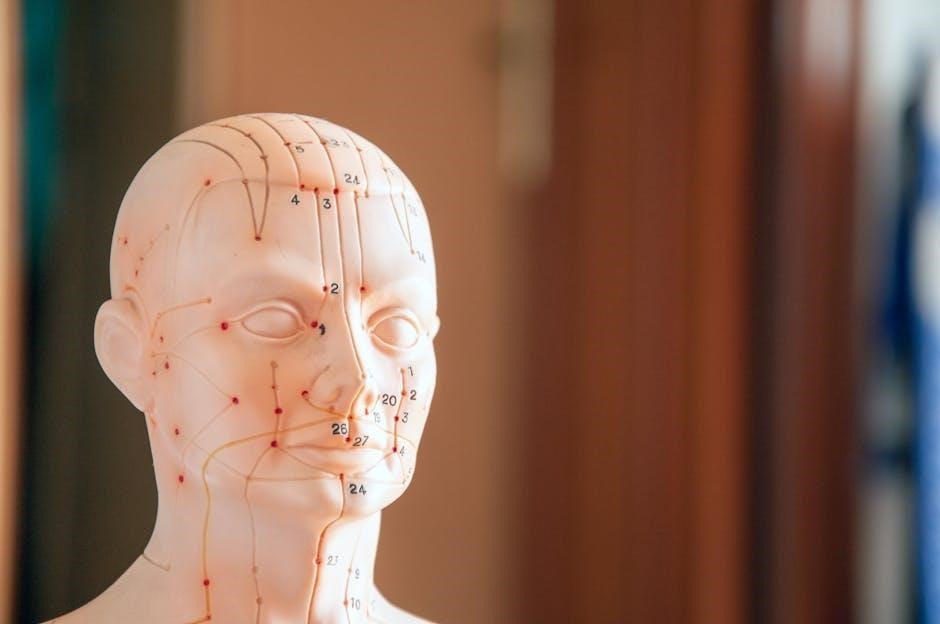
8.2 Applications in Aviation and Industrial Settings
The CLD210M Differential Cylinder Pressure Tester is not only limited to automotive use but also finds applications in aviation and industrial environments. In aviation, this tool is crucial for diagnosing engine issues, ensuring the integrity of cylinders, and maintaining the high standards of aircraft maintenance. Similarly, in industrial settings, it is used to assess the condition of large machinery, helping to identify worn components and leaks promptly. The tool’s durability and accuracy make it suitable for high-pressure environments. By providing precise pressure readings, the CLD210M aids in preventing downtime and ensuring operational efficiency. Its versatility across industries underscores its value as a reliable diagnostic instrument for maintaining engine and machinery health. This tool is essential for professionals requiring detailed insights into internal combustion systems, whether in aerospace or heavy industry.
The CLD210M Differential Cylinder Pressure Tester is an indispensable tool for precise engine diagnostics, offering reliability and accuracy. Its innovative design and durability make it a valuable asset for professionals.
9.1 Summary of Key Features and Benefits
The CLD210M Differential Cylinder Pressure Tester is a versatile and precise diagnostic tool designed for identifying engine issues such as worn rings, defective valves, and leaky head gaskets. Its robust design and user-friendly interface make it ideal for both automotive and industrial applications. Key features include a wide pressure range, built-in regulator, and multiple adapters for compatibility with various engines. The tool offers accurate pressure readings, enabling technicians to quickly pinpoint problems. Its durability and portability, combined with a comprehensive manual, ensure reliable performance and ease of use. The CLD210M stands out for its ability to provide detailed insights into engine health, making it an essential asset for professionals seeking efficient and accurate diagnostics.
9.2 Final Thoughts on the CLD210M
The CLD210M Differential Cylinder Pressure Tester is a highly regarded tool in the automotive and industrial sectors, known for its precision and reliability. With a 99.4% user rating, it has proven to be an indispensable asset for technicians seeking accurate engine diagnostics. Its ability to identify issues like worn rings and defective valves with ease makes it a time-saving solution. The tool’s durability and portability further enhance its value, allowing professionals to use it efficiently in various settings. The comprehensive manual and excellent customer support add to its appeal. Overall, the CLD210M stands out as a superior choice for anyone needing a reliable and user-friendly diagnostic tool, making it a wise investment for improving engine performance and extending equipment life.

Frequently Asked Questions (FAQs)
- What is the CLD210M Differential Cylinder Pressure Tester?
- How does it help in engine diagnostics?
- Where can I find the manual for the CLD210M?
- What are the benefits of using the CLD210M?
10.1 Common Queries About the CLD210M
Users often inquire about the CLD210M’s operation and calibration. Questions include: “How do I calibrate the tool for accurate readings?” and “What pressure levels indicate engine issues?” Additionally, many ask about the tool’s compatibility with different engine types and its maintenance requirements. Understanding these aspects ensures effective use of the CLD210M for diagnosing engine problems accurately.
